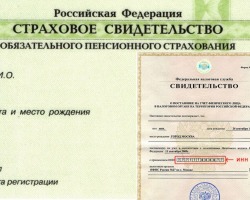From this article you will learn how to crochet a beautiful tablecloth.
Content
- Crochet beautiful tablecloth - round: scheme, description
- Video: Groundpress "Croilus". Master class for beginners.
- Beautiful tablecloth rectangular on the table: diagram, description
- Video: Crochet rectangular tablecloth (No. 2) Part 1
- Video: Crochet rectangular tablecloth (No. 2) Part 2
- Video: Crochet rectangular tablecloth (No. 2) Part 3
- Video: Crochet rectangular tablecloth (No. 2) Part 4
- Beautiful crochet oval tablecloth: scheme, description
- Video: charming tablecloth from small flower motifs
- Beautiful simple tablecloth: scheme, description
- Video: Grinding "Assa". Master class for beginners with a scheme.
- Crochet tablecloth: diagram, description
- Video: napkin hook. Crochet napkins. Hook for beginners. Crochet 2019.
- Beautiful square tablecloth: diagram, description
- Video: Crochet tablecloth from square motifs. How to combine motives?
- Crochet tablecloths from motives: diagram, description
- Video: A wonderful motive for a tablecloth or blanket
- Beautiful holy filler Crochet: Scheme, Description
- Video: how to crochet a border. Kaima with a fillet pattern for finishing products. Pattern number 3
- Beautiful openwork tablecloth by crochet: diagram, description
- Video: MK. Tender cotton tablecloth, crochet
- Tips for beginner needlewomen: knit a beautiful tablecloth with crochet
- Video: Crochet tablecloth from square motifs
The tablecloth used to be an indispensable attribute of each kitchen. This thing not only insured the surface from a layer of dust and spots, but often became a central decoration of the table and pleased the eyes of all households and guests at home.
Our grandmothers knew how to crochet tablecloths on their own. It seemed simple. But every modern craftswoman is capable of creating such a thing, you only need to follow the instructions. And with the right approach, after some time, you can achieve the same result as our grandmothers.
Crochet beautiful tablecloth - round: scheme, description

A round tablecloth is a constant classic that is still in fashion. Even in modern interiors you can find such a table decoration. Tie a beautiful round tablecloth with crochet, especially since doing it is simple. Below is a scheme and description.
Before starting work, you need to decide on such basic aspects as:
- The parameters of the future tablecloth
- Form of the product
- Color
Important: Correctly choose the scheme by which you will create a tablecloth. The fundamental factors in this case will be the level of skill of the needlewoman, the duration of the knitting process, as well as the level of complexity.
After all, it will be difficult to work with a volumetric tablecloth, consisting of a wide variety of motives, just that has just taken as a hook. We picked up simple but beautiful models for knitting.

So, we proceed to the process itself. The shape, color, motives and circuits of the kitchen furniture “cloak” can be chosen strictly at will for the future product. A round tablecloth is a kind of classic with which the craftswomen begin their practice. To create such a tablecloth, prepare the following:
- Hook (no3 or no3.5)
- Approximately 600 g of one hundred percent cotton yarn (calculation - 120m/50g)
Description of the mating process:
- First you need to dial 10 air loops, after which, using the connection column, combine the first and last loop together.
- Further in each woven boot. Pet. You need to knit 4 poles. with 2 capes, 5 pieces connecting them together with 1 air. Pet.
- In all Loops are knitted 6 poles. (without crochet), which are also grouped at 6 pieces of V.P. between themselves.
- Next, it is knitted (also through all the hed. Peter. Alternately), 6 poles. (already with 2 crochets), together they gather double a pillar. With 2 crochet, which are knitted in 1 loop. The following row must be made with columns (with repeating crochet) and joint loops. They will alternate in this order: 1 column and 2 loops.
- Two Petes. With a double cloak. - knitted in every Pet. Compounds are connected among themselves at the top. In the meantime, all the pillars are connected to each other by a large air loop of 4. The next row is only 1 pole. (without crochet) in air. Pet. (any), and between them there are 4 poles. (with double crochet). Collect together with the help of Pet.
- In those columns where there is no crochet, they knit on 1 pillar (already with a double nak.), While in air. Pet. 5 columns are knitted (with double crochet).
- Through any 1-fold column (one with double crochet), 1 double column (with the same crochet) is knitted, and 1 vp goes between them.
- Further in any V.P. The 7th pillar is knitted. (without crochet), and in 2-two columns (with two crochet) 2 pillars (already without crochet).
- In the column that is without crochet and is connected in the column (with a double nak.), 1 pole is knitted. (with triple crochet), which are shedding. Pet.
- Now through any V.P. knit 8 columns (with 2 crochet), and between 4 columns in one figure, tie 1 vp.
- Further 1 pole. Without a stump. Tie in V.P. (in any), and also tie 1 air. Pet. Right between them.
- Now in all Pet. knit 8 pillars with 2 crochet, in the column already without crochet-pillars with 2 crochet.
In this way, knit the entire tablecloth until the end of the knitting of the product. Create the border with columns without throwing a working thread, connecting a frill into a continuous cloth.
Important: Any new row begins with 2 out. a loop and one column (Soy.).
Video: Groundpress "Croilus". Master class for beginners.
Beautiful tablecloth rectangular on the table: diagram, description

The tablecloth-rejug has a beautiful appearance and will look great on the countertop with the same parameters. Such a “cloak” will decorate both furniture in the kitchen and a festive countertop in the living room. Any cutlery will look beautiful on this tablecloth. In addition, it is just to wash it, it will not lose its shape and it is easy to knit. Here is a scheme to a beautiful rectangular tablecloth connected by a crochet:

Deciphering the scheme:
- v.P. - air loop;
- art. - column;
- art. With n. - Nakid column.
Description of the mating process:
- We take 6 air. Pet. And we collect them with one column.
- For lifting, we use 4 air loops at once, and we knit a rapport at once with 1 column with 2 capes and 10 V.P.
- For lifting, we use 3 V.P., then - 3 times rapport: under 10 V.P. It is knitted for 5 tbsp. Nakid, after 17 V.P. and 5 tbsp. crochet under it.
- Further 1 V.P., then in the upper part of the column with two crochet 1 column. With nak. The row ends the connection pillar of 3 vp. rise.
- Important: rows 3 and 7 are repeated in the form of a rapport three times.
- Ryak three includes knitting 5 crochet columns, 15 V.P., 5 tbsp. S., 1 V.P. and 1 tbsp. S., 1 V.P.
- Row 4: 5 tbsp. S., 15 V.P., 5 tbsp. S., 1 V.P., 1 tbsp. and 1 V.P.
- Row 5: 5 tbsp. S., 6 V.P. Through the last row, 2 tbsp. without n., 6 V.P., 5 tbsp. N., 1 V.P., 1 tbsp. and 1 V.P.
- Ryadov six includes a viscous of 8 V.P.
- Row six: 9 V.P.
It is worth knowing: The grouping of patterns occurs as follows: 11 vp is binded, of which only 6 are knitted, then they are looped by the connection column with a similar part of the second pattern and knit with each other 6 V.P.
Video: Crochet rectangular tablecloth (No. 2) Part 1
Video: Crochet rectangular tablecloth (No. 2) Part 2
Video: Crochet rectangular tablecloth (No. 2) Part 3
Video: Crochet rectangular tablecloth (No. 2) Part 4
Beautiful crochet oval tablecloth: scheme, description

The tablecloth-sized is suitable, both for countertops with the same parameters, and for such furniture round, square and rectangular shape. This is a universal “cloak” that will decorate any countertop. Here is a scheme for a beautiful oval tablecloth by crochet:

One of the features of the mating crochet is to find on the things of any central pattern. Their variety is infinite, for the oval tablecloth you can take “pineapple”: the simplest and most common.
For an oval tablecloth you need:
- 1 kg of cotton threads;
- Hook (No1.75);
- Marker for fabric work.
Description of the mating process:
- To start knitting, you need to dial one hundred air loops.
- They follow 4 lifting V.P.
- Next is a slanting grid that makes it possible to switch to a new row (first scheme).
- The row ends with a connecting column., Which is knitted in the first V.P. setting edge.
- Further guided by the NO2 scheme. Make subsequent stages using the scheme, divide the knitting into the lateral and central parts, and also put markers so as not to get confused in the process of knitting.
- Further, according to the No3 scheme, create the pattern itself. Its rapports are shifted in relation to each other according to the principle of chess.
- Now the lateral parts are knitted (how to do this, shown in the NO3 scheme)
Four times duplicate the height from 10 to 28 row, close. Knit the border in any way. It is possible as described above in the text.
Video: charming tablecloth from small flower motifs
Beautiful simple tablecloth: scheme, description

The simplest, but stylish and original tablecloth can be tied in a day. It is worth noting that this will succeed in an experienced craftswoman. A novice needlewoman will need a little more time. Try to tie a simple, but beautiful tablecloth and surprise your household.
Here's what you need to work:
- 280 g of thin white color of yarn No. 20
- Hook No. 1.25
Scheme for such a tablecloth:

The motives will be located like this:

Description of the mating process:
- Pattern: 1st circle of the river: a strip of 10 V.P. Transform into a circle, 3 V.P. ‚add 24 tbsp to the formed circle. s/n. Close it 1 Soyen. In the 3rd V.P.
- 2nd circle. Ryakov: 7 V.P. (5 for lifting instead of 1 -and with 3/N ‚2 for the arch), then knit into any pillar. s/n for 1 tbsp. with s/n and 2 V.P.
- Finish the circle. row 1 soda. Article 5th V.P. and 1 soda. Art. in the 1st arch.
- 3rd-7th circle. Row: do according to the scheme. In the 3rd row 3 final V.P. Change the last arch in one of Art. s/n in the 1st Art. b/n.
- In the 4th row, the final V.P. Replace the last arch with one Art. With 2/n.
- In the 5th row, duplicate: 1 group of 3 tbsp. From 2/n in the arch, 5 V.P.
- All rows to close 1 set. Art. In the 1st Art. b/n.
- In the 7th row, knit lush columns of 4 tbsp. With 2/n.
- Close the circle. row 1 soda. Art. And cut off the thread.
- As you knit 91 motives, it is necessary to combine them with each other when knitting the 7th row. To do this, according to a schematic drawing using a set. Stolb. Combine two magnificent columns., alternating with each other, with the corresponding magnificent column. motives located nearby.
Put the patterns according to the attached schematic pattern. Tie the finished product according to the first drawing. It shows in detail how to knit columns and hooks.
Video: Grinding "Assa". Master class for beginners with a scheme.
Crochet tablecloth: diagram, description

Such a tablecloth is suitable to cover a small coffee table. It is smaller in size than a regular tablecloth. You can tie a large tablecloth from several of these motives, and then connect them in one product using connecting columns, as well as make 6 napkins - you get a dining set of handmade.
Here is a knitting pattern of such a tablecloth:

The description of the work is simple. You can tie one motive in half an hour. Tie as many patterns as necessary and connect in one large product - simple and fast.
Video: napkin hook. Crochet napkins. Hook for beginners. Crochet 2019.
Beautiful square tablecloth: diagram, description

The square tablecloth will be a great gift for a mother or grandmother, as it is suitable for a table of any shape: round, rectangular, square and so on. Tie such a tablecloth from white yarn. Under it you can cover a dark tablecloth - it will be a beautiful combination of textiles in any interior.
We will need:
- Yarn - 450 grams
- Hook number 2.5
It's important to know: Tie one square and measure the size of its side. Knowing the size of the future product, it is necessary to calculate how many such parts are needed for a full tablecloth.
Here's a scheme:

Description of the mating process:
- You need to start knitting from the center of the square with a ring of air loops with an amount of 8 pieces.
- Then there is a row of 8 lush columns with 3 crochets.
- In the 3rd circle, you need to form angles (in the diagram).
- There are 10 circles in one motive.
In this work, there is no element that would be more difficult than a magnificent column, so, having mastered it, you can start work and tie the right number of motives. However, we must also remember that, if you incorrect all the motives together, then all efforts will be in vain. A single -color thread is necessary to connect the place on the scheme. But an important element is a cross in the corner of a motive, for which another ring of 10 vp is needed.
Video: Crochet tablecloth from square motifs. How to combine motives?
Crochet tablecloths from motives: diagram, description

Thanks to knitting from motives, you can create really original things. In addition, you can always give the product absolutely any shape. The first step, of course, is the knitting of the motive itself. From a certain number of motives, a full -fledged product is obtained. The motive is constantly duplicated. Here is a crocheting scheme for such a tablecloth:

Description to the knitting process:
- Knit the motive according to the scheme, starting with 6 air. Pet.
- Then the crochet columns further according to the schematic image of the knitting process (above in the figure).
- To combine the motives, when knitting the final row of the second motive, you need to perform a set. pillar. In the corners and in the central part (provided that there are no places of joints in the diagram).
- It is possible where the motives are connected, perform 1 vp. (or 2-3), and then, introducing hooks into 1 motive, make a column without crochet.
- Further again 1 (or 2-3) V.P.
- Then focus on the diagram, tie the second motive to the connection site.
- Thus, tie all the motives, getting a full -fledged product.
Here are a few more motives. You can choose any and tie the original product:




Video: A wonderful motive for a tablecloth or blanket
Beautiful holy filler Crochet: Scheme, Description

Filey knitting is a technique that is one of the most common and simple. However, the products look beautiful and elegant. Speaking simply: a product with filled cells that form the pattern is knitted.

Here is a knitting scheme for such a tablecloth or napkin with a filing viscous:

Description of the mating process:
- It must be remembered that the size of the cells, which are a fundamental factor in the creation of the product, depends entirely on the thickness of the threads.
- One of the advantages of file knitting - the scheme can be made yourself, only painting the necessary cells on the usual notebook sheet.
- Traditionally, one such cell contains 2 air loops and a crochet column on the side.
- Now calculating the right amount of the set will be easy: just multiply the number of loops by the number of the cells themselves, which will be in the product.
- Stitch the strip of the desired length and create 3 air loops that are a row.
- After unfolding, continue as: 2 vp. (upper part of the cage), one crochet in the third loop, etc.
- Turn the workpiece; To cross the next row, we make 2 loops of lifting and 2 loops of the top of the cell. After that, we duplicate the viscosity of the first row.
- Do not forget to follow the scheme: you can skip a painted cage.
- There is such a thing as a “closed” cell. It is done very easily: now it is not 2 V.P. The top of the loop, and two crochet columns are knitted. It turns out that four columns go one after another.
By the way, the pillars can be knitted both in the loop of the previous row and in the cage, which is below. It is necessary to see that the number of loops remains unchanged. Everything - the tablecloth is ready.
Video: how to crochet a border. Kaima with a fillet pattern for finishing products. Pattern number 3
Beautiful openwork tablecloth by crochet: diagram, description

Thanks to this mating method, you can create a product of any shape, as well as sizes.
Progress:
- First you should make a pattern taking into account the required size.
- Then the knitting process itself is performed.
- At the last stage, tie the edges of the product.
Here is the scheme and description of the process of the openwork tablecloth by crochet:

- Tie eight Pet.
- Connect them into a circle with a set. pillar.
- Instead of the 1st pillar with NAC. Tie 3 air. Pet. rise.
- Now tie 23 pillars with a cloak. In the circle. A row finish the Soid. pillar.
- Continue to knit on the schematic of 34 rows inclusive.
One openwork pattern is ready. Continue to knit further, connecting the patterns with the help of a set. pillar. If you do not succeed in the process of knitting, read the tips that are below. Also watch the video how the craftswoman knit an openwork tablecloth.
Video: MK. Tender cotton tablecloth, crochet
Tips for beginner needlewomen: knit a beautiful tablecloth with crochet

It is pleasant for each person to create and create. And it is much more pleasant to use your creation in everyday life. A tablecloth is an integral part of modern life. This attribute will not only protect the surface of the table, but also delights the eye. Unfortunately, the purchased tablecloths are short -lived, quickly dirty and spoil, so the creation of such a thing is yourself - not only the process is pleasant, but also very profitable: the craftswoman will not only increase the level of her skill, but also create a useful and necessary thing.
A few useful tips for those who nevertheless decided to create a tablecloth:
- Before you start work, you need to choose the threads. Most often, cotton threads are used, tablecloths from which are held for a long time.
- The color of the future product can be absolutely any: from white to acid yellow. It all depends on the desire of the needlewoman. Of course, for the kitchen table it is best to choose white color, and other surfaces (for example, a cabinet in the room) can be decorated with brighter colors.
- The next step is the choice of the main working tool, that is, the hook. They are distinguished by two factors: the material from which they are made, as well as the number. It is best to take steel hooks: they are more durable, do not leave traces on threads, and also do not electrify yarn.
Important: To understand how thick the hook needs, you need to use either manual selection, or calculate using one hundred grams of thread. It must be remembered that the amount of yarn spent will depend on the thickness of the hook.
If the tablecloth requires half a kilo of thread, then due to a thick hook, this amount can double, or even more. In addition, the knitting with a thin hook is more dense, and such products preserve the original shape well.







